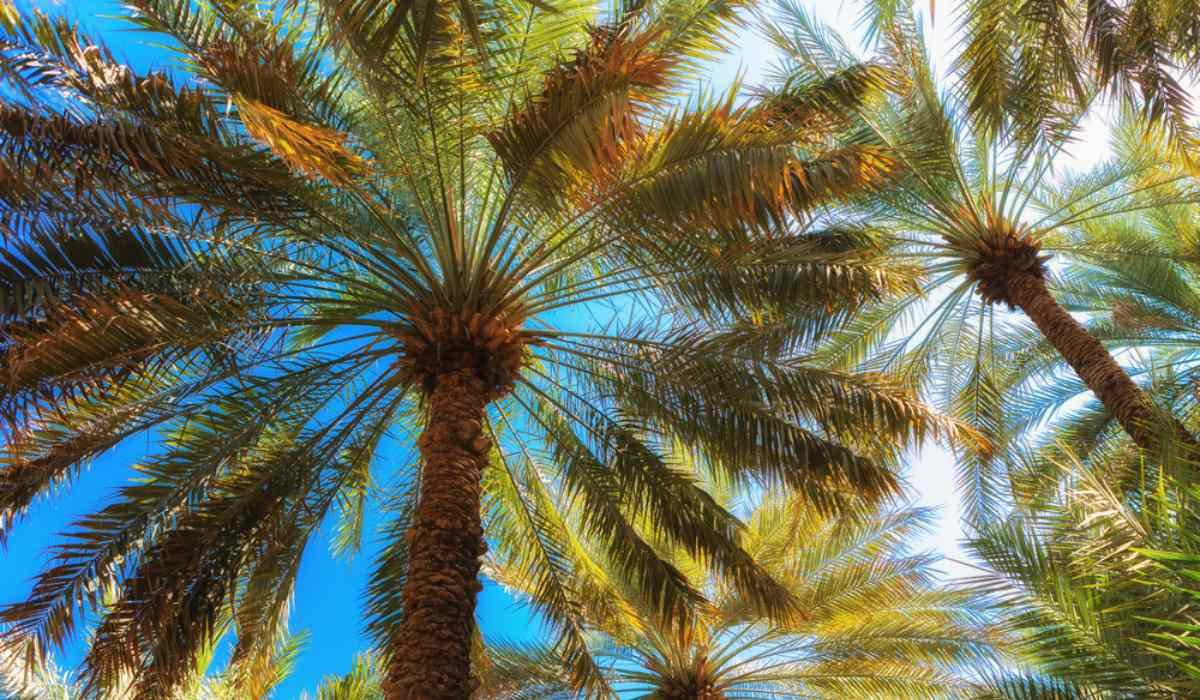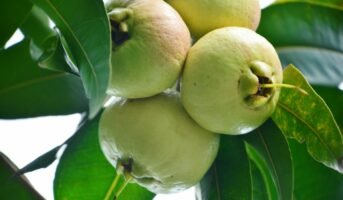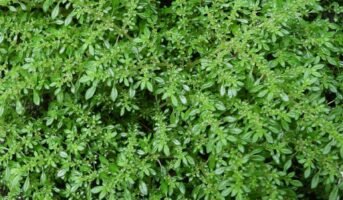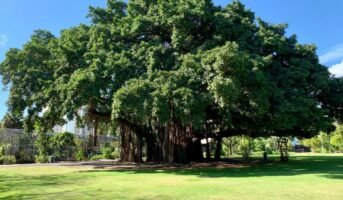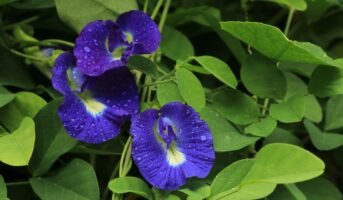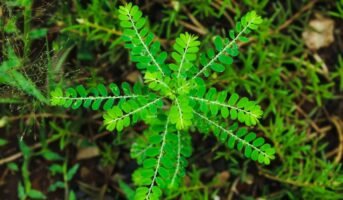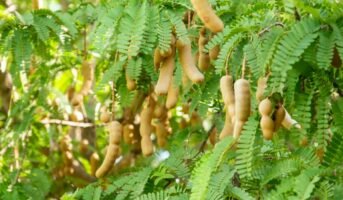Date trees (Phoenix dactylifera) can be a great addition to any garden or landscape. The trees produce delicious fruits while providing a unique aesthetic to any outdoor space. Growing and caring for date trees can be a rewarding experience for any gardener or homeowner.
With an understanding of the best practices for organic date tree growing, you will be able to enjoy a generous harvest of sweet and healthy dates that you can enjoy with friends and family. Here are the basics of growing and caring for these trees, from planting and watering to pruning and fertilising.
See also: Pygmy Date Palm: Facts, features, growing and maintenance tips, and uses
Date tree: Key facts
| Botanical name | Phoenix dactylifera |
| Common name | Date Palm, Palm Tree, Sugar Date, Cane Date, Coco Date |
| Family | Arecaceae |
| Native areas | the Middle East and North Africa |
| Plant type | Tree |
| Mature size | 25 to 40 feet |
| Sun exposure | Direct sunlight |
| Soil type | Loamy, sandy, well-drained |
| Bloom time | Late winter or early spring |
| Leaves type | Small, oval leaflets |
| Flower colour | Yellow |
| Edible part | Fruit |
| Toxic | No |
Date tree: Physical features

Source: Pinterest
The date tree is a tall, slender tree that reaches up to 30 feet in height, with a single trunk and a spreading canopy of branches. The leaves are pinnate and are divided into small, oval leaflets. The flowers are small and yellow, borne in clusters at the ends of the branches. The fruit, the edible part of the plant, is an oval-shaped drupe that is usually yellow or orange when ripe.
The skin of the fruit can be either thin or thick, depending on the variety. The flesh of the date is sweet and juicy, with a chewy texture. Dates are a rich source of dietary fibre, vitamins, and minerals and have been used for centuries in Middle Eastern and Mediterranean cuisines.
The date tree is a dioecious species, meaning it has both male and female plants. The male plants produce pollinating flowers, and the female plants produce edible dates. The fruit of the female date palm varies in colour from yellow to reddish-brown, depending on the variety.
Date tree: How to grow it at home?
Dates are delicious and nutritious, and growing the tree in your backyard is a rewarding and enjoyable experience. With proper care, you can harvest delicious dates from your date plant within a few years. Here is how to get started.
- Choose the right variety: Dates come in different varieties, so make sure to choose one that is suitable for your climate.
- Plant in the right location: Date palms require full sun and well-drained soil. If you live in a cold climate, it is best to plant your date palm in a pot so you can bring it indoors during the coldest months.
Date trees prefer sandy soils with good drainage. The soil should have a pH of between 7 and 8 and should be enriched with organic matter.
- Feed your date palm: Date palms need fertiliser to stay healthy and productive. Feed your date palm twice a year with a slow-release fertiliser designed for date palms.
- Protect your date palm from pests: Date palms are susceptible to pests such as aphids and spider mites. If you notice any pests on your date palm, treat it with insecticidal soap or horticultural oil.
- Harvest your date: Once your date palm is mature and healthy, you can expect to harvest your date.
Date tree: Care tips
Maintaining a date palm is not difficult, but it does require some attention. Here are some tips for caring for and maintaining a date plant:
Date tree: Sunlight requirements
In perfect harmony with its preferred dry, hot climate, the date palm thrives under abundant sunshine. While it can tolerate light shade, optimal growth occurs in full sun, requiring a minimum of six hours of direct sunlight on most days.
Date tree: Soil requirements
The choice of well-draining soil is paramount when selecting the planting site for your date palm. Flourishing in sandy or loamy soils, this resilient palm tree exhibits salt tolerance and favours a slightly acidic to alkaline soil pH.
Date tree: Water requirements
Drought-tolerant once established, the date palm demands strategic watering, particularly during flowering and fruiting seasons to ensure a bountiful crop. While mature trees withstand dry conditions, young trees require more frequent watering. Striking a balance, it’s essential to prevent the soil from complete dryness while averting excessive saturation.
Date tree: Temperature and humidity requirements
Thriving in hot, dry, and sun-drenched conditions, the date palm reaches its full potential at temperatures around 95 degrees Fahrenheit, especially during pollination. With a remarkable tolerance down to 20 degrees Fahrenheit, cold weather poses a risk to frond damage and tree survival. The fruit, too, flourishes in dry heat, with excess humidity and moisture posing a threat to potential rot.
Date tree: Fertiliser requirements
For optimal nourishment, manure stands out as an excellent choice for fertilising date palms. Alternatively, specialised palm tree fertilisers, available in packaged form, offer a tailored nutrient blend. Application follows label instructions, with late winter or early spring being the ideal time to prepare the tree for upcoming flower and fruit production.
Date tree: Uses
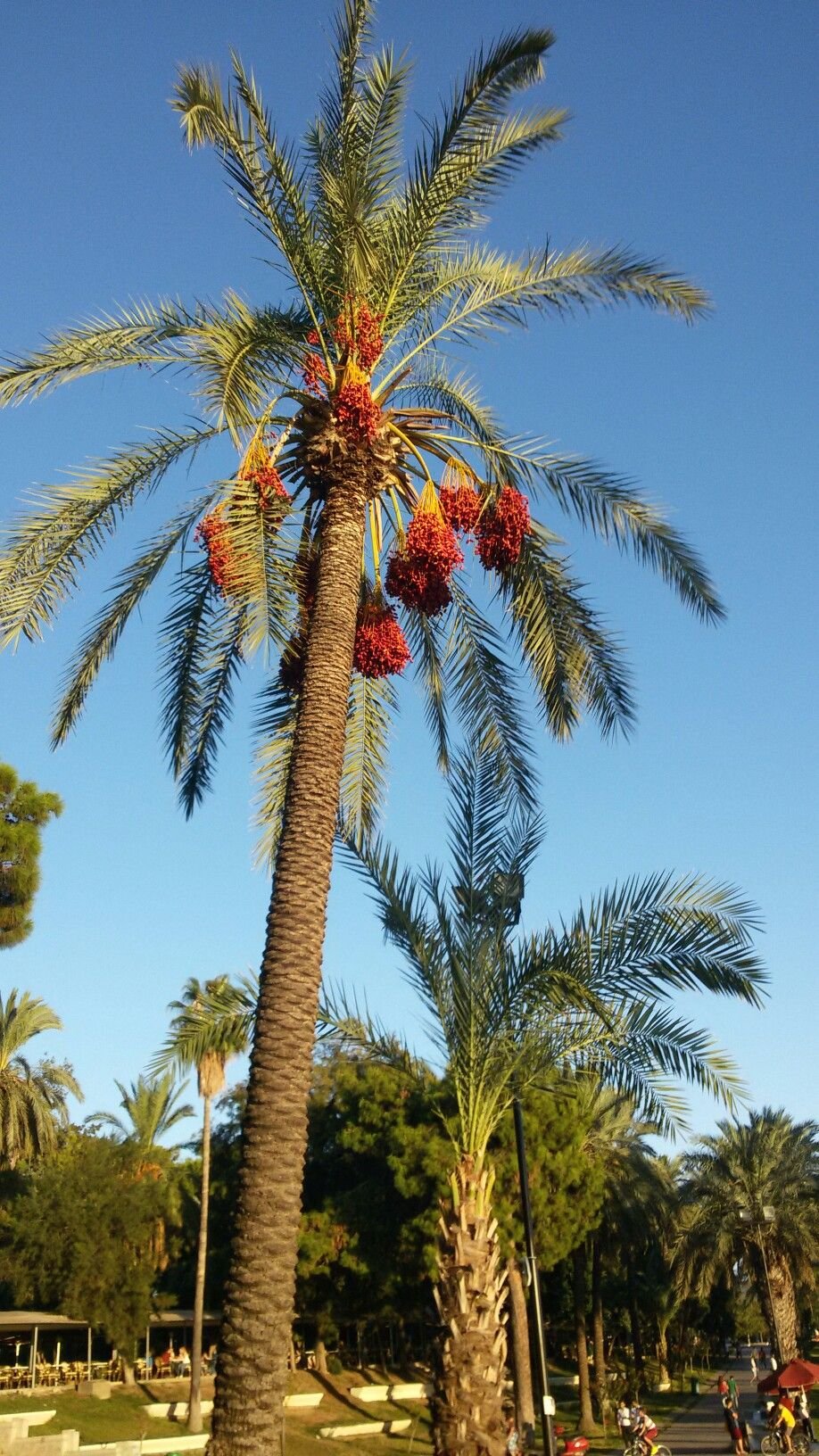
Source: Pinterest
The date palm is used for a variety of purposes, both culinary and medicinal. Dates are a popular snack and are often used in desserts such as date-nut bread, date-filled cookies and date-stuffed pastries. They are rich in vitamins, minerals, and antioxidants, making them a healthy snack. Date syrup, or date honey, is a thick, sweet syrup made from dates. It is used as a sweetener and is often used as a substitute for sugar in baking and cooking.
Date palm leaves are used to make mats and baskets, and the fibre from the leaves is used to make rope. The trunk of the date palm is also used to make furniture and other household items. The date palm’s woody drupes are a source of fuel. They are burned as charcoal or used to make charcoal briquettes, which are used for cooking and heating.
Dates are eaten fresh, dried, or made into jam. Date palms are also used in traditional medicine. The leaves, bark, and sap of the date palm are believed to have medicinal properties. Date palm extracts are used to treat a variety of ailments, including digestive issues, skin problems, and even cancer.
Date tree: Benefits
Some advantages of having a date tree at home:
- Improved digestion: Date palms are high in dietary fibre, which can help improve digestion by ensuring regular bowel movements.
- Heart health: Dates contain a great amount of potassium, which regulates blood pressure and reduces the risk of stroke and heart disease.
- Antioxidant power: Dates are packed with antioxidants, compounds that protect cells from damage caused due to free radicals.
- Immune system boost: Dates are rich in vitamin C, which aid in fighting off infections, and they are also a good source of zinc, which helps to maintain a healthy immune system.
- Improved energy levels: Dates are a natural source of carbohydrates, essential for providing the body with energy.
- Weight loss: Dates are a low-calorie snack, meaning they can help to control hunger and reduce calorie intake. They are high in fibre, which can help keep you feeling full for longer.
- Bone health: Dates are a good source of magnesium and phosphorus, which are both essential for healthy bones. Eating dates can help reduce the risk of osteoporosis and other bone-related conditions.
- Reduced risk of cancer: Dates contain several compounds that have cancer-fighting properties.
Date tree: Toxicity
Evergreen date trees are commonly cultivated for their delicious, sweet fruit. While the dates themselves are safe to eat, the leaves, bark, and sap of the date tree can be toxic if ingested in large amounts. The leaves contain a toxic compound called phorbol ester, which can cause skin irritation and severe digestive problems. The bark and sap of the tree can also contain toxins that may cause vomiting, seizures, or death.
It is important to note that if consumed in small amounts, these compounds may not pose any threat to humans or animals. However, it is best to avoid eating date tree leaves, bark, and sap altogether.
See also: Banyan national tree: Know importance and features
FAQs
How much water do date trees need?
The amount of water needed will depend on the type of tree and the climate you are growing it in. Generally, date trees require one to two inches of water per week, varying depending on the tree and climate.
How often should I fertilise my date tree?
You should fertilise the tree twice a year: once in the spring and once in the fall.
How can I protect my date tree from pests and diseases?
The best way to protect your date tree from pests and diseases is to practise good cultural practices, such as proper watering, fertilising, and pruning.
How long does it take for date trees to produce fruit?
Date trees can take up to six to seven years to produce fruit. However, some types of date trees can produce fruit as early as three to four years.

Dhwani is a content management expert with over five years of professional experience. She has authored articles spanning diverse domains, including real estate, finance, business, health, taxation, education and more. Holding a Bachelor’s degree in Journalism and Mass Communication, Dhwani’s interests encompass reading and travelling. She is dedicated to staying updated on the latest real estate advancements in India.
Email: [email protected]
